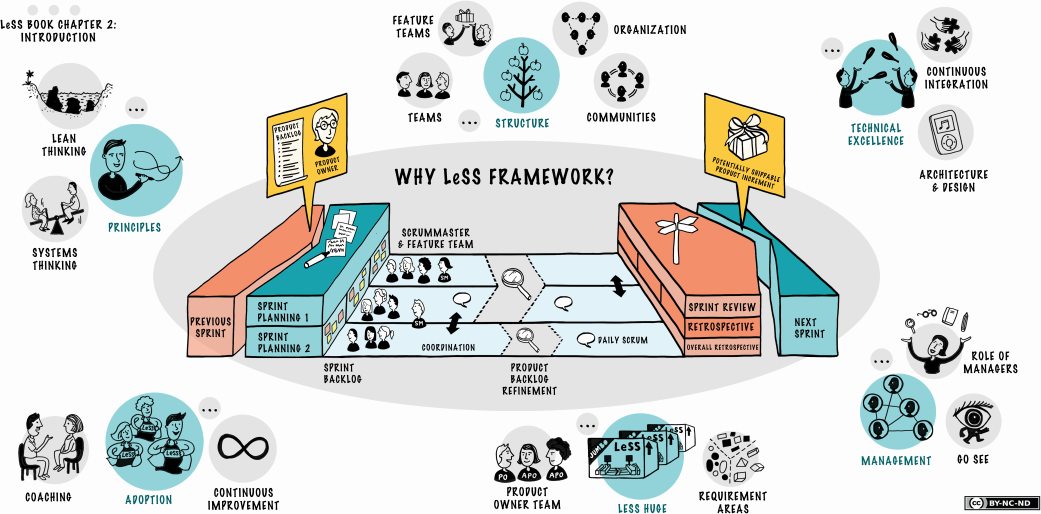Large Scaled Scrum (LeSS) is a lightweight framework for scaling agile product development to multiple teams consisting of hundreds or even thousands of team members working together on one specific shared product. These teams range from having 8-12 members which are cross-functional teams depending on your company’s structure. There are 2 Levels of LeSS framework you can adopt with:
Craig Larman and Bas Vodde created LeSS after years of experimenting at large organizations in a wide variety of domains. It builds on top of the Scrum principles such as empiricism, cross-functional self-managing teams and provides a framework for applying that at scale. It is a simple and minimalistic framework where there provides “just enough” rules, guidelines, and principles on how to adopt Scrum in the product development environment at large-scale. The LeSS framework includes only conventional scrum roles such as the product owner, scrum master and the team.

LeSS considers it is a fundamental flaw to ask the organization to tailor it down the overwhelming roles, rules or artifacts instead of the framework should be minimalistic incorporate just enough. The basic roles are unchanged, but some of the meetings are changed and some are introduced at the the-cross team level.
For example:
So if you understand Scrum, you should able to understand LeSS easily:
“Scaling Scrum starts with understanding standard one-team Scrum. From that point, your organization must be able to understand and adopt LeSS, which requires examining the purpose of one-team Scrum elements and figuring out how to reach the same purpose while staying within the constraints of the standard Scrum rules.” – LeSS Framework on LeSS.works
Visual Paradigm provides an intuitive LeSS software for automating your entire and project artifact in one place. Now, your teams can plan, track and manage scrum projects through a LeSS Canvas which you are familiar with. Whether your software project involves a single team or multiple teams around the world, we keep everyone on the same page, same canvas!
